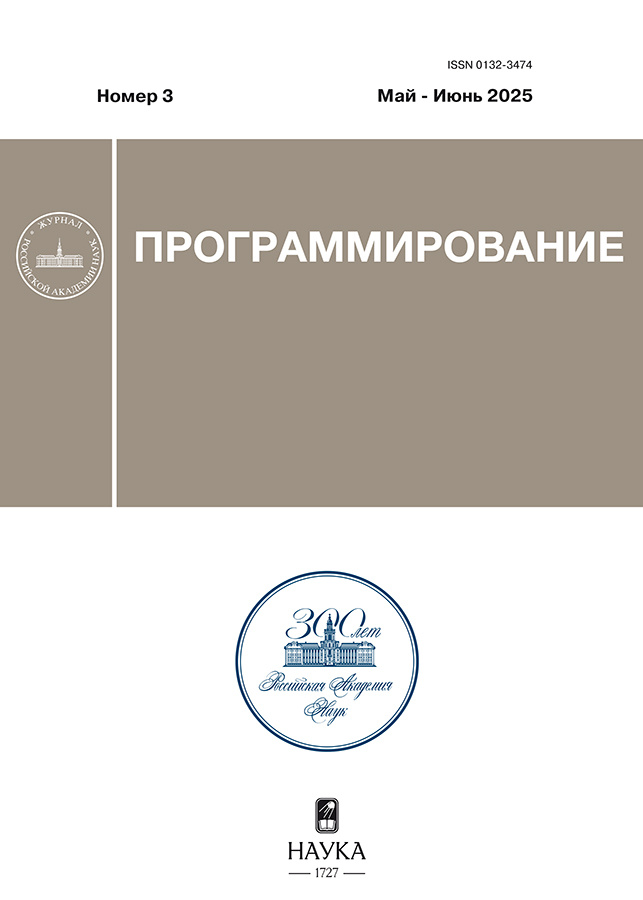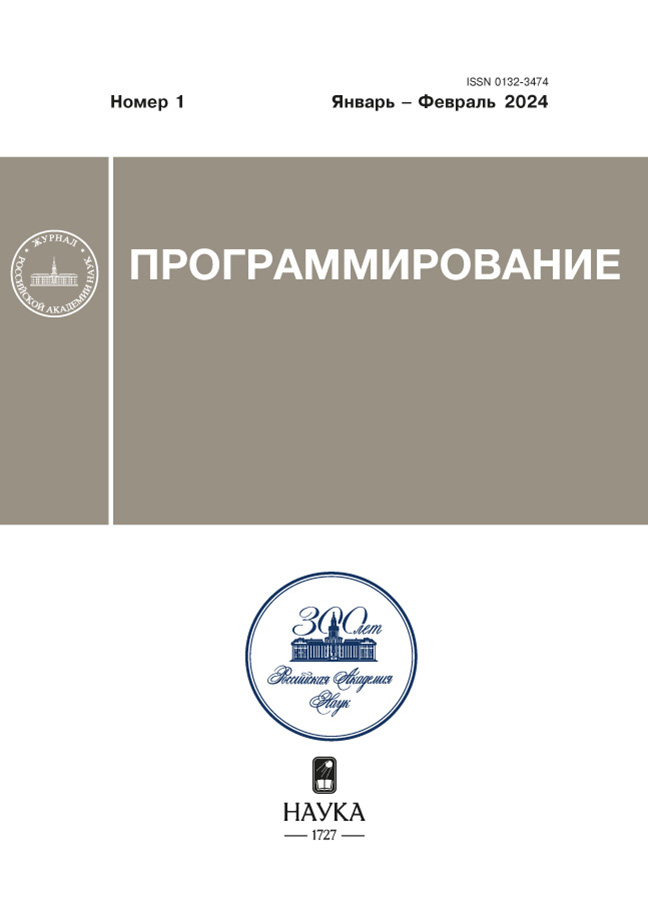On linear cellular automata
- Authors: Kulikov V.R.1, Kytmanov А.А.2, Poroshin А.О.1, Timofeev I.V.3,1, Fedchenko D.P.3,1
-
Affiliations:
- Siberian State University
- MIREA – Russian Technological University
- Kirensky Institute of Physics, Federal Research Center KSC SB RAS
- Issue: No 1 (2024)
- Pages: 30-39
- Section: THEORETICAL ISSUES IN PROGRAMMING
- URL: https://rjeid.com/0132-3474/article/view/675718
- DOI: https://doi.org/10.31857/S0132347424010032
- EDN: https://elibrary.ru/HOIZMS
- ID: 675718
Cite item
Abstract
Wolfram cellular automata are considered and their operation is demonstrated using an example of traffic flow simulation. For the class of one-dimensional elementary cellular automata, the concept of linearity is introduced in the language of Zhegalkin operators. An algorithm for finding linear Zhegalkin operators with multipliers of three variables is presented. The algorithm is implemented in Python.
Keywords
Full Text
About the authors
V. R. Kulikov
Siberian State University
Author for correspondence.
Email: v.r.kulikov@mail.ru
Russian Federation, Krasnoyarsk
А. А. Kytmanov
MIREA – Russian Technological University
Email: aakytm@gmail.com
Russian Federation, Moscow
А. О. Poroshin
Siberian State University
Email: poroshin.012332@gmail.com
Russian Federation, Krasnoyarsk
I. V. Timofeev
Kirensky Institute of Physics, Federal Research Center KSC SB RAS; Siberian State University
Email: tiv@iph.krasn.ru
Russian Federation, Krasnoyarsk; Krasnoyarsk
D. P. Fedchenko
Kirensky Institute of Physics, Federal Research Center KSC SB RAS; Siberian State University
Email: fdp@iph.krasn.ru
Russian Federation, Krasnoyarsk; Krasnoyarsk
References
- von Neumann J. Theory of Self-Reproducing Automata, Ed. by Burks, A.W., Urbana: Illinois Univ. Press, 1966.
- Tsetlin M.L. Some problems of finite state machine behavior, Dokl. Akad. Nauk SSSR, 1961, vol. 139, no. 4, pp. 830–833.
- Conway J. et al. The game of life, Sci. Amer., vol. 223, no. 4, p. 4.
- Batty M. Cities as Complex systems: Scaling, interaction, networks, dynamics and urban morphologies, in Encyclopedia of Complexity and Systems Science, 2009, pp. 1041–1071.
- Ghosh P. et al. Application of cellular automata and Markov-chain model in geospatial environmental modeling—A review, Remote Sens. Appl.: Soc. Env., 2017, vol. 5, pp. 64–77.
- Introduction to Mathemetical Modeling of Traffic Flows, Ed. by Gasnikov, A. et al. Litres, 2022 [in Russian].
- Fronczak P. et al. Cellular automata approach to modeling self-organized periodic patterns in nanoparticle-doped liquid crystals, Phys. Rev. E., 2022, vol. 106, no. 4, p. 44705.
- Janssens K.G.F. An introductory review of cellular automata modeling of moving grain boundaries in polycrystalline materials, Math. Comput. in Simul., 2010, vol. 80, no. 7, pp. 1361–1381.
- Lemont B.K. and Seybold P.G. Cellular automata modeling of complex biochemical systems, in Encyclopedia of Complexity and Systems Science, 2015.
- Kozhoridze G., Dor E.B., and Sternberg M. Assessing the dynamics of plant species invasion in Eastern-Mediterranean Coastal Dunes Using Cellular Automata Modeling and Satellite Time-Series Analyses, Remote Sens., 2022, vol. 14, no. 4, p. 1014.
- Wolfram S. Statistical mechanics of cellular automata, Rev. Modern Phys., 1983, vol. 55, no. 3., p. 601.
- Wolfram S. et al. A New Kind of Science, Champaign: Wolfram Media, 2002, vol. 5, p. 130.
- Tomassini M., Sipper M., and Perrenoud M. On the generation of high-quality random numbers by two-dimensional cellular automata, IEEE Trans. Comput., 2000, vol. 49, no. 10, pp. 1146–1151.
- Walus K. et al. RAM design using quantum-dot cellular automata, NanoTechnology Conference, 2003, Vol. 2, pp. 160–163.
- Cagigas-Muniz D. et al. Efficient simulation execution of cellular automata on GPU, Simul. Modell. Pract. Theory, 2022, vol. 118, p. 102519.
- Sato T. Decidability for some problems of linear cellular automata over finite commutative rings, Inf. Proc. Lett., 993, vol 46, no. 3, pp. 151–155.
- Martin A. et al. Reversibility of linear cellular automata, Appl. Math. Comput., 2011, vol. 217, no. 21, pp. 8360–8366.
- Martin del Rey A., Casado Vara R., and Hernández S. D. Reversibility of symmetric linear cellular automata with radius r = 3, Mathematics, 2019, vol. 7, no. 9, p. 816.
- Zhegalkin I.I. Arithmetization of symbolic logic, Mat. Sb., vol. 35, no. 3–4, pp. 311–377.
- Fedchenko D.P., Novikov V.V., and Timofeev I.V. Photonic topological insulators of the Rudner type in terms of of tricolor cellular automata, Uch. Zap. Fiz. Fakul’teta MGU, 2021, No. 5, p. 2150302.
- Fedchenko D.P., Kim P.N., and Timofeev I.V. Photonic topological insulator based on frustrated total internal reflection in array of coupled prism resonators, Symmetry, 2022, vol. 14, no. 12, p. 2673.
- Gal’perin G.A. and Zemlyakov A.N. Mathematical Billiards: Billiard Problems and Related Problems of Mathematics and Mechanics, Moscow: Nauka, 1990 [in Russian].
Supplementary files






















